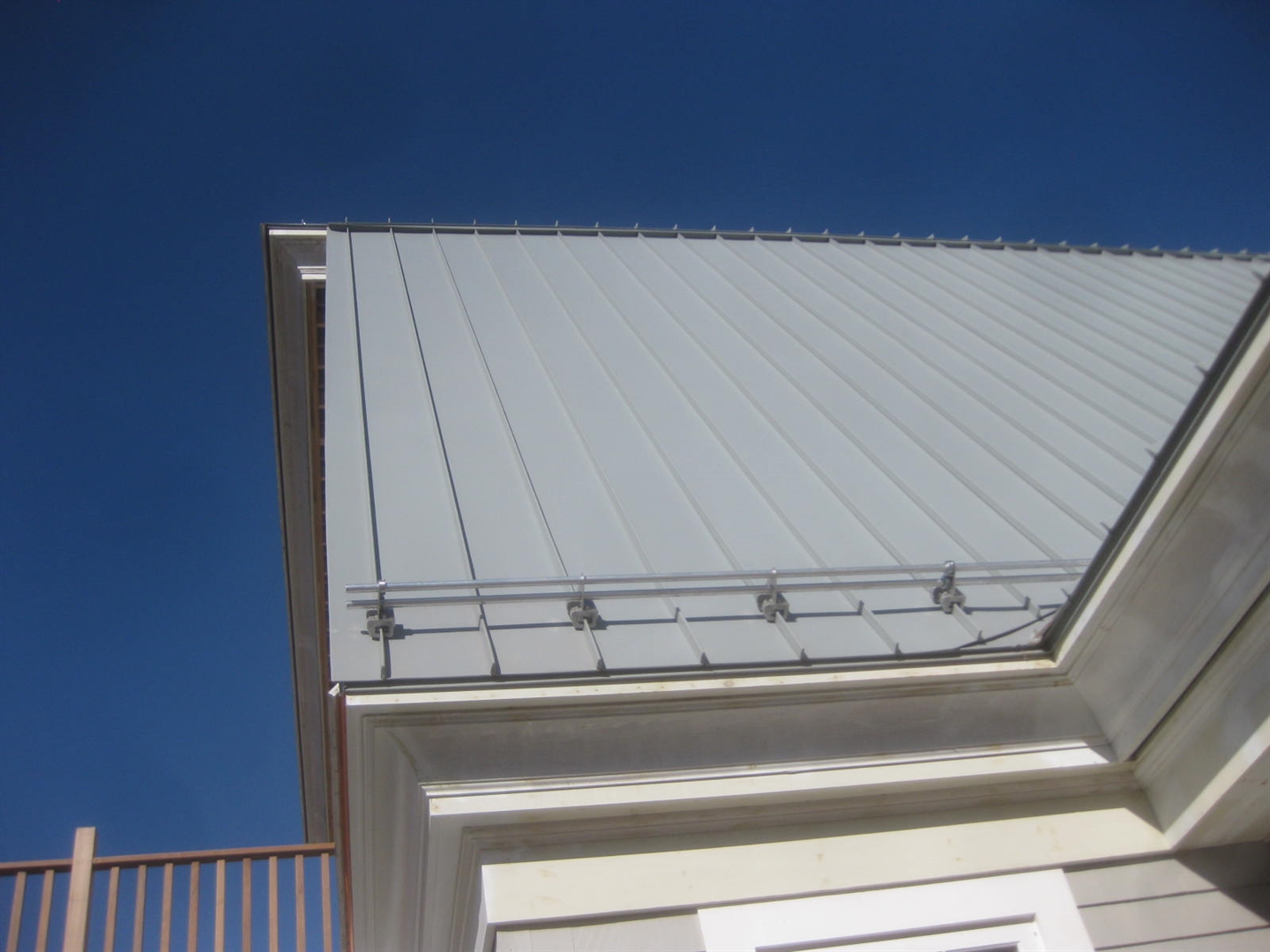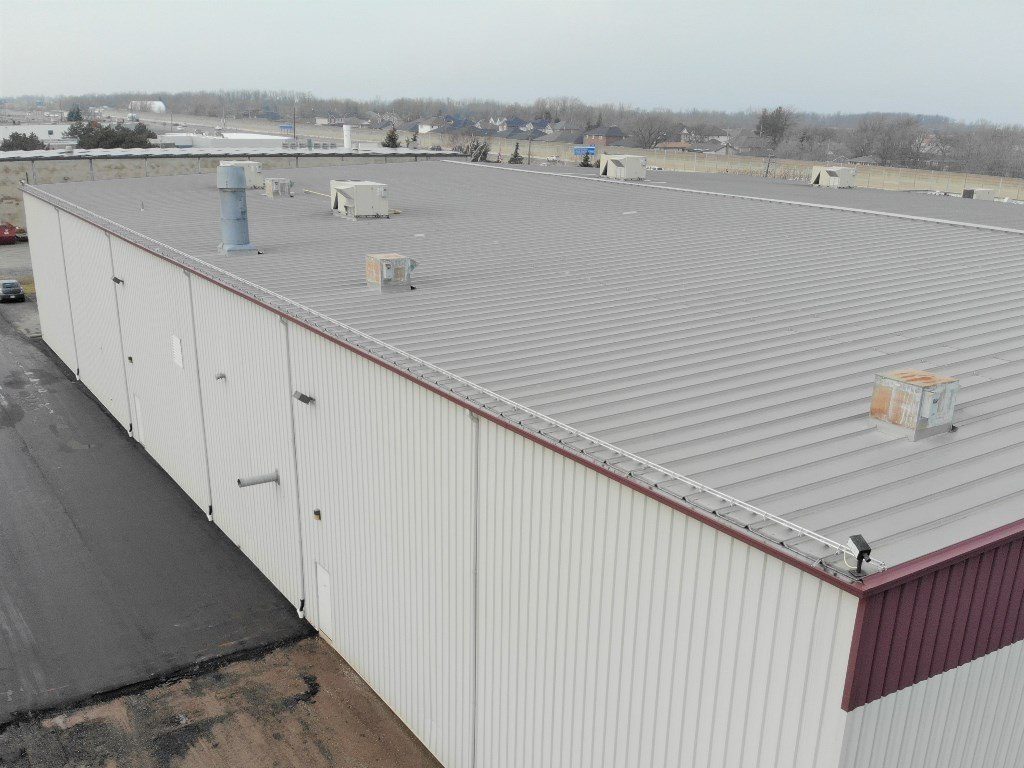
There are a wide variety of effective snow retention products available that will attach directly and easily to the metal roof seam and therefore not violate the integrity of the roof system. It is highly recommended that whichever snow retention device you specify for installation on your metal roof you select one that won’t penetrate the roof deck.

For this reason snow retention devices are usually installed in multiple rows in concentrated areas at the eave end of the roof. those with the greatest shear and tensile strength lie at the base toward the downslope end of the snow bank. Snow banks on roofs are known to densify in wedge patterns so as the layers begin to thaw and the snow bank compacts from its own weight, the densest layers i.e. The primary function of all snow retention devices is to restrain movement of a bank of snow by restraining its base. Both styles of snow retention devices have been known to perform well when installed properly. Snow guards may be repeated in specific patterns progressing up the slope of the roof, but also with greater concentration near the eaves. Snow guards are small individual devices generally spot located and installed at or near the eave. Depending on the specific project conditions these devices may need to be repeated in multiple rows up the slope of the roof, but always with greater concentration near the eave area.Ī second method of snow retention is a snow guard. These fence assemblies are usually installed at or near the eaves. They are designed to hold rooftop snow accumulations in place and keep them from sliding dangerously off the roof and causing damage or injury. These are horizontal components, installed laterally in a continuous manner across the expanse of the roof. There are two primary types of snow retention products that are most commonly specified by architects to keep snow loads and accumulations safely in checks. When considering snow retention solutions for any roof structure the very first step is to determine the loads that will need to be held in place by the snow retention system.Īrchitects then should consider what types of snow retention options will be the best solution for a particular project and they should be keenly aware of the testing parameters, results and ratings of the products they are specifying. In addition, snow shedding from a roof can also damage landscaping, parked vehicles, lower or adjacent roof sections and even the paint finish of the standing seam metal roof itself. Injuries and even fatalities have resulted from falling snow and ice from roofs. In addition, many manufacturers have developed snow guards and systems for metal roofs.Frozen snow sliding off of roofs is serious business! A variety of modern manufacturers have designed metal powder-coated guards that can match the colors of varying roof types, and snow rails are commonly colored to complement the roofs they protect. Although primarily installed for functional purposes, panel guards and snow railing are sometimes used to highlight a roof's aesthetic appeal and design. Modern snow guards are made of polycarbonate and/or metals, depending on the type, size, and specific function of the guard.

In addition to roofs, other larger natural or man-made objects and structures have also been used as snow guards (also known as snow fences) on steep sloping hills to lessen the effects of avalanches in valley regions. Variants of snow guards have been used for over 300 years all around the world where seasonal snowfall is common. They are however built to separate the snow to allow it to break apart into smaller pieces/sections so that, if they do fall in rising temperatures and thawing conditions, the likelihood of having someone injured by the falling pile of snow is minimized.

Snow guards are not fully intended to completely hold back the snow as this would cause major leak issues when the snow melts. Snow guards are installed with a specific quantity and pattern based on the shape, size and pitch of the roof to provide the most uniform system of retention possible. They are most commonly installed in multiples or rows on a structure's roof surface, as a form of avalanche control. Standing seam metal roof with Snow guards to keep snow from sliding off the roof too quicklyĪ snow guard is a device used to retain snow and ice from falling from one surface to a lower one in contemporary usage, they are installed to prevent snow/ice pack from avalanching and damaging people, plants, and property below.


 0 kommentar(er)
0 kommentar(er)
